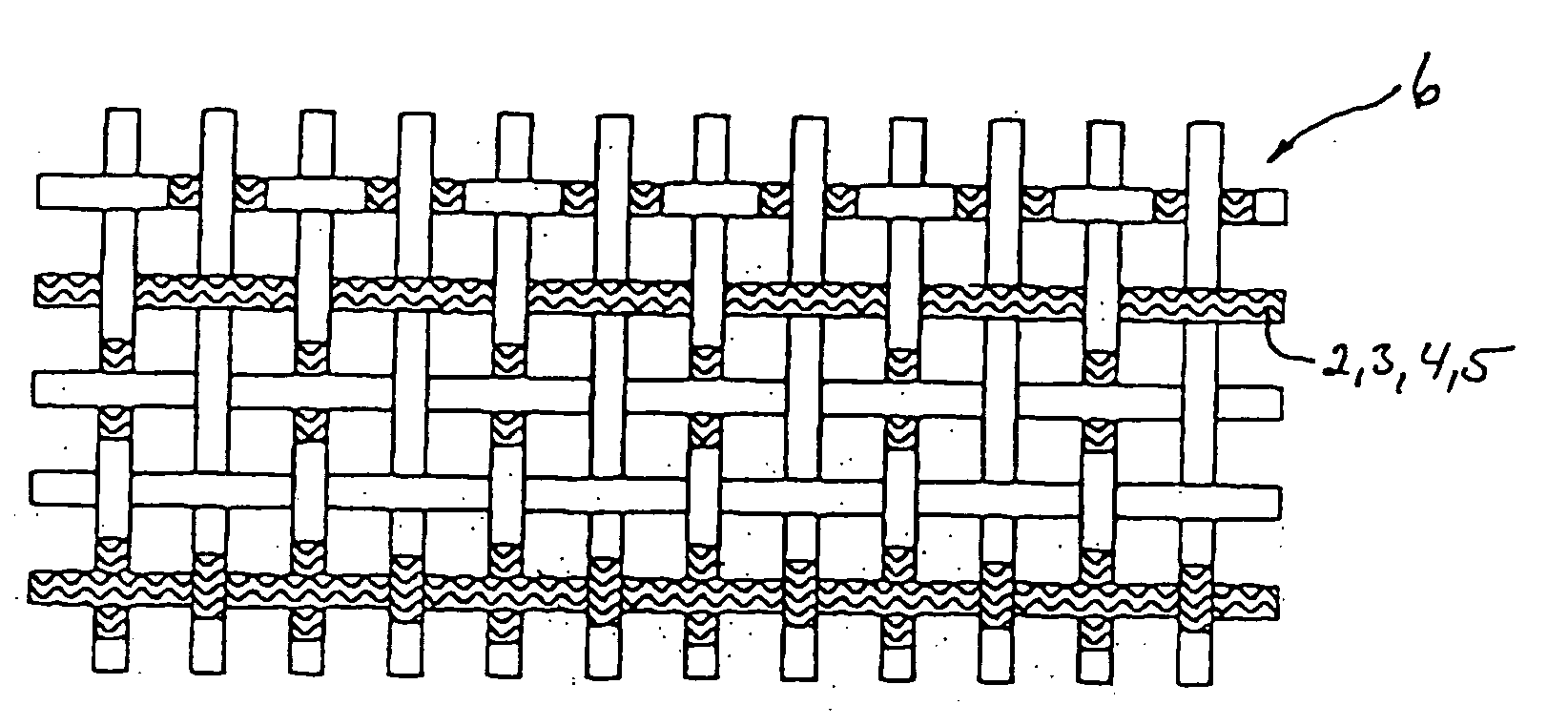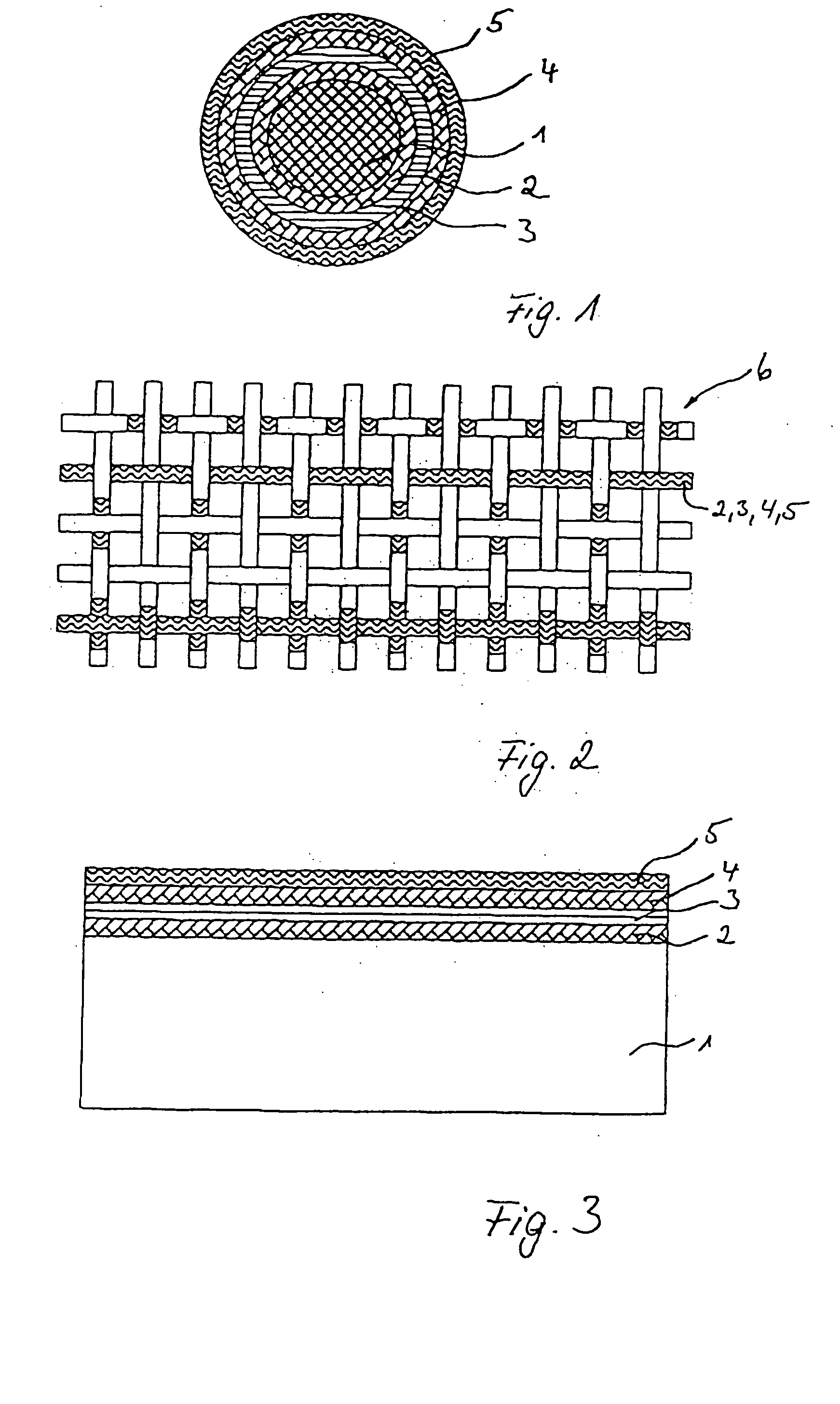Textile product having an integrated sensor for measuring pressure and temperature
a technology of pressure and temperature measurement and integrated sensor, which is applied in the direction of force/torque/work measurement apparatus, instruments, weaving, etc., can solve the problems of large space occupation of individual components, high cost, and inflexible arrangement of individual components with respect to one another
- Summary
- Abstract
- Description
- Claims
- Application Information
AI Technical Summary
Benefits of technology
Problems solved by technology
Method used
Image
Examples
Embodiment Construction
)
[0026]FIG. 1 is a cross section through a textile product according to the present invention, which in this case is embodied as a support element 1 in the form of a monofilament that is completely surrounded by a first metallization 2. Applied onto this first metallization 2 is a second layer 3 having piezoelectric properties. This is a piezo lacquer comprising a polyvinylidene fluoride copolymer that can be sprayed on or otherwise applied. This layer 3 is then polarized, and a second metallization layer 4 is applied. An insulation layer 5 in the form of a lacquer, in contact against second metallization layer 4, serves to protect metallization layer 4 located below it from functional impairments and damage during operation.
[0027]FIG. 2 shows, by way of example, one possible arrangement of support element 1 with sensor layers 2, 3, 4, 5 in a dryer fabric 6. Pressure plays a subordinate role in dryer fabrics 6, i.e. it is substantially constant. The temperature or temperature diffe...
PUM
| Property | Measurement | Unit |
|---|---|---|
| thickness | aaaaa | aaaaa |
| pressure | aaaaa | aaaaa |
| temperature | aaaaa | aaaaa |
Abstract
Description
Claims
Application Information
 Login to View More
Login to View More - R&D
- Intellectual Property
- Life Sciences
- Materials
- Tech Scout
- Unparalleled Data Quality
- Higher Quality Content
- 60% Fewer Hallucinations
Browse by: Latest US Patents, China's latest patents, Technical Efficacy Thesaurus, Application Domain, Technology Topic, Popular Technical Reports.
© 2025 PatSnap. All rights reserved.Legal|Privacy policy|Modern Slavery Act Transparency Statement|Sitemap|About US| Contact US: help@patsnap.com


